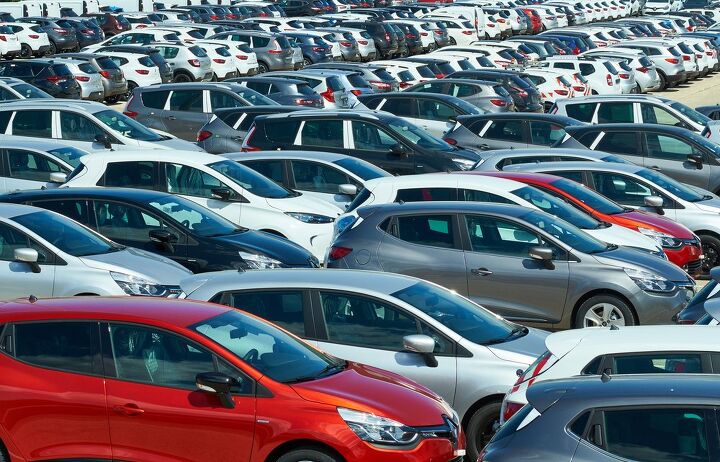Renault-Nissan Alliance Quietly Scales Back Joint Functions

Without the glue that was Carlos Ghosn holding the Renault-Nissan Alliance together, some of the partnership’s joint-business operations are reportedly being disbanded as corporate relations continue to sour. Nissan quietly started dissolving the Office of the CEO in April, after a special corporate governance committee claimed it was one of the reasons why it was so difficult to detect Ghosn’s alleged financial misconduct.
The Japanese automaker has since sought to rejigger its own management structure, as per the committee’s suggestions, however Renault intends on blocking those governance changes. Now the Financial Times is reporting that the two companies are gradually unwinding departments providing oversight for collaborative efforts related to light commercial vehicles, sales and marketing, communications and more.
In 2018, Ghosn made a laundry list of appointments from both companies to support alliance-level functions — sometimes creating entirely new departments. Many executives were redeployed to oversee operations between the two firms, ranging from manufacturing projects to after-sales services. Other divisions, like purchasing, were already merged. But unnamed insiders have reported numerous departments are dismissing their staff while others are simply sitting idle with people having “nothing to do.”
From FT:
The idea was to set the businesses on a course of ever-greater integration, with the aim of achieving €10bn of joint synergies by 2022, and thus making the alliance “irreversible.”
Since Mr. Ghosn’s arrest on charges that he denies, France and Japan have drifted further apart, in part because of an increasingly strained relationship between the two rival management teams.
“It is fair to say the relationship is as bad as we have seen in 20 years, and that is having an impact on joint operations,” said a second person close to the situation.
While these decisions are primarily about Nissan and Renault gaining distance from the Ghosn era, nullifying agencies used to help the alliance collaborate makes it appear as though they’re also trying to achieve space from each other. As things currently stand, neither manufacturer has done much to assuage fears that their differences have become irreconcilable.
The only noteworthy exception is Nissan’s latest proposal to establish a new “strategy committee” with seats reserved for Renault’s chairman and CEO. Meanwhile, French President Emmanuel Macron is scheduling time to discuss the dire state of the automotive alliance with Japanese Prime Minister Shinzo Abe next week.
[Image: Gilles Lougassi/Shutterstock]

A staunch consumer advocate tracking industry trends and regulation. Before joining TTAC, Matt spent a decade working for marketing and research firms based in NYC. Clients included several of the world’s largest automakers, global tire brands, and aftermarket part suppliers. Dissatisfied with the corporate world and resentful of having to wear suits everyday, he pivoted to writing about cars. Since then, that man has become an ardent supporter of the right-to-repair movement, been interviewed on the auto industry by national radio broadcasts, driven more rental cars than anyone ever should, participated in amateur rallying events, and received the requisite minimum training as sanctioned by the SCCA. Handy with a wrench, Matt grew up surrounded by Detroit auto workers and managed to get a pizza delivery job before he was legally eligible. He later found himself driving box trucks through Manhattan, guaranteeing future sympathy for actual truckers. He continues to conduct research pertaining to the automotive sector as an independent contractor and has since moved back to his native Michigan, closer to where the cars are born. A contrarian, Matt claims to prefer understeer — stating that front and all-wheel drive vehicles cater best to his driving style.
More by Matt Posky
Latest Car Reviews
Read moreLatest Product Reviews
Read moreRecent Comments
- Michael Gallagher I agree to a certain extent but I go back to the car SUV transition. People began to buy SUVs because they were supposedly safer because of their larger size when pitted against a regular car. As more SUVs crowded the road that safety advantage began to dwindle as it became more likely to hit an equally sized SUV. Now there is no safety advantage at all.
- Probert The new EV9 is even bigger - a true monument of a personal transportation device. Not my thing, but credit where credit is due - impressive. The interior is bigger than my house and much nicer with 2 rows of lounge seats and 3rd for the plebes. 0-60 in 4.5 seconds, around 300miles of range, and an e-mpg of 80 (90 for the 2wd). What a world.
- Ajla "Like showroom" is a lame description but he seems negotiable on the price and at least from what the two pictures show I've dealt with worse. But, I'm not interested in something with the Devil's configuration.
- Tassos Jong-iL I really like the C-Class, it reminds me of some trips to Russia to visit Dear Friend VladdyPoo.
- ToolGuy New Hampshire


































Comments
Join the conversation
"....Quietly Scales Back Joint Functions". Bet that would get Elon's attention!
Good since my first car was a Nissan Sentra from 2005-2009.